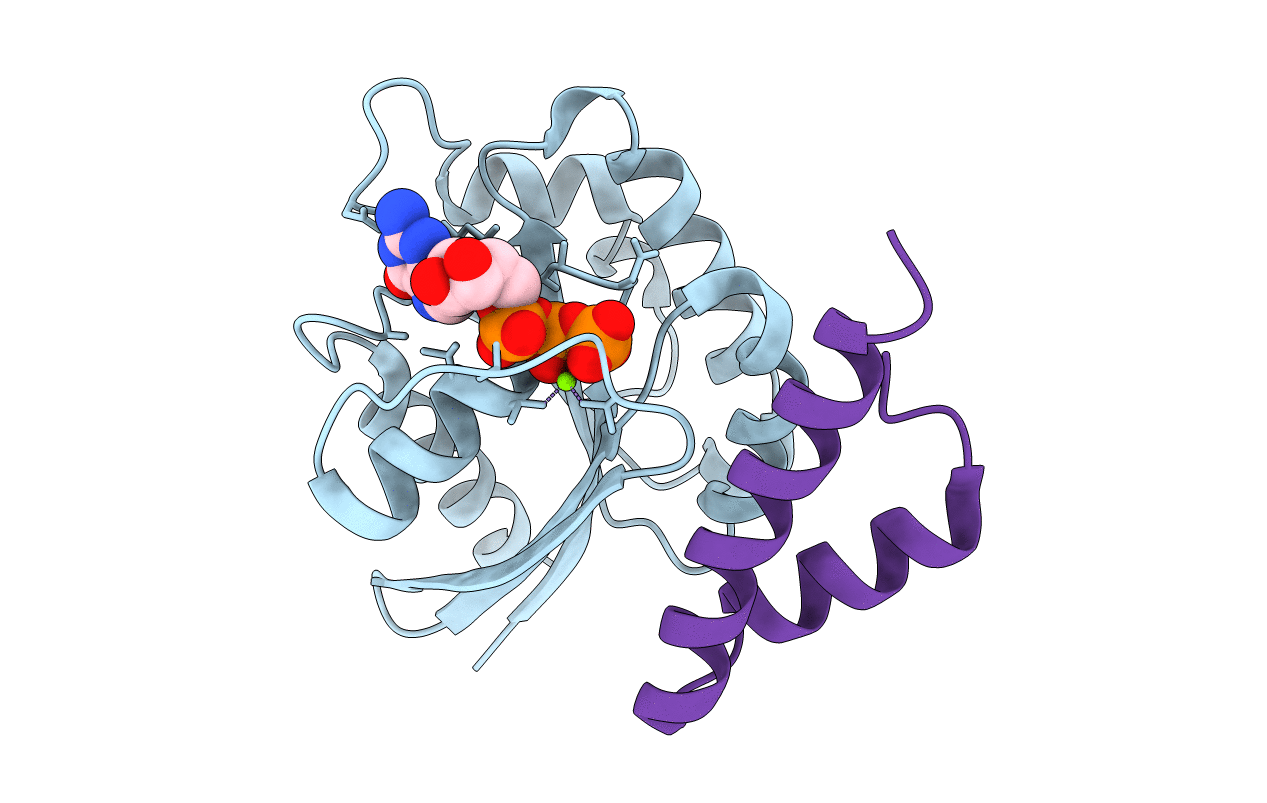
Deposition Date
2003-01-05
Release Date
2003-05-06
Last Version Date
2023-10-25
Entry Detail
PDB ID:
1J2J
Keywords:
Title:
Crystal structure of GGA1 GAT N-terminal region in complex with ARF1 GTP form
Biological Source:
Source Organism:
Mus musculus (Taxon ID: 10090)
Homo sapiens (Taxon ID: 9606)
Homo sapiens (Taxon ID: 9606)
Host Organism:
Method Details:
Experimental Method:
Resolution:
1.60 Å
R-Value Free:
0.22
R-Value Work:
0.19
R-Value Observed:
0.19
Space Group:
P 21 21 21


